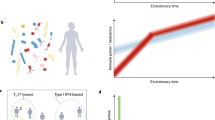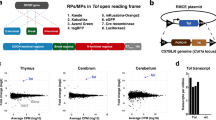Abstract
Genetic variation in the antigen-presenting lectin-like receptor gene complex (APLEC) associates with autoimmunity and arthritis in rats and humans. We hypothesized that the encoded C-type lectin-like receptors might influence innate immunity and responses to infectious agents. To test this hypothesis, we compared in vivo and in vitro phenotypes in DA rats and APLEC-congenic rats. Survival rates following infection with Staphylococcus aureus and Herpes simplex virus differed significantly between the two strains. Likewise, differential delayed type hypersensitivity (DTH), an immunological reaction involving T lymphocytes and macrophages, was observed in response to provocation with the chemical oxazolone. Unstimulated bone marrow-derived macrophages from the two strains appeared to already have polarized activation states with different mRNA levels of CD163 and Dectin-1 receptors. Following stimulation with a panel of microbial agents, differences in induced mRNA and protein levels were shown for interleukin (IL)-6 and IL-10 following stimulation with lipopolysaccharide, mannan and β-glucan. Expression levels of APLEC gene mRNAs also differed, and both strains had a notably dichotomous expression of the genes, with general downregulation of all four Dcir genes and upregulation of Mincle and Mcl. We suggest that human APLEC genes may similarly regulate infectious diseases, DTH and general macrophage activation status.
This is a preview of subscription content, access via your institution
Access options
Subscribe to this journal
Receive 6 digital issues and online access to articles
$119.00 per year
only $19.83 per issue
Buy this article
- Purchase on Springer Link
- Instant access to full article PDF
Prices may be subject to local taxes which are calculated during checkout







Similar content being viewed by others
References
Josefsson E, Tarkowski A . Staphylococcus aureus-induced inflammation and bone destruction in experimental models of septic arthritis. J Periodontal Res 1999; 34: 387–392.
Whitley RJ . Herpes simplex encephalitis: adolescents and adults. Antiviral Res 2006; 71: 141–148.
Sancho-Shimizu V, Zhang SY, Abel L, Tardieu M, Rozenberg F, Jouanguy E et al. Genetic susceptibility to herpes simplex virus 1 encephalitis in mice and humans. Curr Opin Allergy Clin Immunol 2007; 7: 495–505.
Tarkowski A, Collins LV, Gjertsson I, Hultgren OH, Jonsson IM, Sakiniene E et al. Model systems: modeling human staphylococcal arthritis and sepsis in the mouse. Trends Microbiol 2001; 9: 321–326.
Guo JP, Backdahl L, Marta M, Mathsson L, Ronnelid J, Lorentzen JC . Profound and paradoxical impact on arthritis and autoimmunity of the rat antigen-presenting lectin-like receptor complex. Arthritis Rheum 2008; 58: 1343–1353.
Lorentzen JC, Flornes L, Eklow C, Backdahl L, Ribbhammar U, Guo JP et al. Association of arthritis with a gene complex encoding C-type lectin-like receptors. Arthritis Rheum 2007; 56: 2620–2632.
Flornes LM, Bryceson YT, Spurkland A, Lorentzen JC, Dissen E, Fossum S . Identification of lectin-like receptors expressed by antigen presenting cells and neutrophils and their mapping to a novel gene complex. Immunogenetics 2004; 56: 506–517.
Weis WI, Taylor ME, Drickamer K . The C-type lectin superfamily in the immune system. Immunol Rev 1998; 163: 19–34.
Kanazawa N . Dendritic cell immunoreceptors: C-type lectin receptors for pattern-recognition and signaling on antigen-presenting cells. J Dermatol Sci 2007; 45: 77–86.
Kanazawa N, Tashiro K, Inaba K, Miyachi Y . Dendritic cell immunoactivating receptor, a novel C-type lectin immunoreceptor, acts as an activating receptor through association with Fc receptor gamma chain. J Biol Chem 2003; 278: 32645–32652.
Yamasaki S, Ishikawa E, Sakuma M, Hara H, Ogata K, Saito T . Mincle is an ITAM-coupled activating receptor that senses damaged cells. Nat Immunol 2008; 9: 1179–1188.
Josefsson E, Carlsten H, Tarkowski A . Neutrophil mediated inflammatory response in murine lupus. Autoimmunity 1993; 14: 251–257.
Verdrengh M, Tarkowski A . Riboflavin in innate and acquired immune responses. Inflamm Res 2005; 54: 390–393.
Vincendeau P, Gobert AP, Daulouede S, Moynet D, Mossalayi MD . Arginases in parasitic diseases. Trends Parasitol 2003; 19: 9–12.
Andersson A, Kokkola R, Wefer J, Erlandsson-Harris H, Harris RA . Differential macrophage expression of IL-12 and IL-23 upon innate immune activation defines rat autoimmune susceptibility. J Leukoc Biol 2004; 76: 1118–1124.
Mills CD, Kincaid K, Alt JM, Heilman MJ, Hill AM . M-1/M-2 macrophages and the Th1/Th2 paradigm. J Immunol 2000; 164: 6166–6173.
Haddad F, Zaldivar F, Cooper DM, Adams GR . IL-6-induced skeletal muscle atrophy. J Appl Physiol 2005; 98: 911–917.
Park JY, Pillinger MH . Interleukin-6 in the pathogenesis of rheumatoid arthritis. Bull NYU Hosp Jt Dis 2007; 65 (Suppl 1): S4–S10.
Xing Z, Gauldie J, Cox G, Baumann H, Jordana M, Lei XF et al. IL-6 is an antiinflammatory cytokine required for controlling local or systemic acute inflammatory responses. J Clin Invest 1998; 101: 311–320.
Tilg H, Dinarello CA, Mier JW . IL-6 and APPs: anti-inflammatory and immunosuppressive mediators. Immunol Today 1997; 18: 428–432.
Yadav M, Schorey JS . The beta-glucan receptor dectin-1 functions together with TLR2 to mediate macrophage activation by mycobacteria. Blood 2006; 108: 3168–3175.
Schaer CA, Vallelian F, Imhof A, Schoedon G, Schaer DJ . Heme carrier protein (HCP-1) spatially interacts with the CD163 hemoglobin uptake pathway and is a target of inflammatory macrophage activation. J Leukoc Biol 2008; 83: 325–333.
Lorentzen JC, Klareskog L . Susceptibility of DA rats to arthritis induced with adjuvant oil or rat collagen is determined by genes both within and outside the major histocompatibility complex. Scand J Immunol 1996; 44: 592–598.
Lorentzen JC, Glaser A, Jacobsson L, Galli J, Fakhrai-rad H, Klareskog L et al. Identification of rat susceptibility loci for adjuvant-oil-induced arthritis. Proc Natl Acad Sci USA 1998; 95: 6383–6387.
Lorentzen JC . Identification of arthritogenic adjuvants of self and foreign origin. Scand J Immunol 1999; 49: 45–50.
Holmdahl R, Lorentzen JC, Lu S, Olofsson P, Wester L, Holmberg J et al. Arthritis induced in rats with nonimmunogenic adjuvants as models for rheumatoid arthritis. Immunol Rev 2001; 184: 184–202.
Bereczky-Veress B, Lidman O, Sabri F, Bednar I, Granath F, Bergstrom T et al. Host strain-dependent difference in susceptibility in a rat model of herpes simplex type 1 encephalitis. J Neurovirol 2008; 14: 102–118.
Jennische E, Bergstrom T, Johansson M, Nystrom K, Tarkowski A, Hansson HA et al. The peptide AF-16 abolishes sickness and death at experimental encephalitis by reducing increase of intracranial pressure. Brain Res 2008; 1227: 189–197.
Couper KN, Blount DG, Riley EM . IL-10: the master regulator of immunity to infection. J Immunol 2008; 180: 5771–5777.
Stout RD, Suttles J . Functional plasticity of macrophages: reversible adaptation to changing microenvironments. J Leukoc Biol 2004; 76: 509–513.
Bianchi ME . DAMPs, PAMPs and alarmins: all we need to know about danger. J Leukoc Biol 2007; 81: 1–5.
Brown MG, Scalzo AA . NK gene complex dynamics and selection for NK cell receptors. Semin Immunol 2008; 20: 361–368.
Chung JW, Yoon SR, Choi I . The regulation of NK cell function and development. Front Biosci 2008; 13: 6432–6442.
Long EO . Negative signaling by inhibitory receptors: the NK cell paradigm. Immunol Rev 2008; 224: 70–84.
Blom T, Franzen A, Heinegard D, Holmdahl R . Comment on ‘The influence of the proinflammatory cytokine, osteopontin, on autoimmune demyelinating disease’. Science 2003; 299: 1845; author reply 1845.
Backdahl L, Guo JP, Jagodic M, Becanovic K, Ding B, Olsson T et al. Definition of arthritis candidate risk genes by combining rat linkage-mapping results with human case control association data. Ann Rheum Dis; published online 23 December 2008; doi:10.1136/ard.2008.090803.
Jagodic M, Marta M, Becanovic K, Sheng JR, Nohra R, Olsson T et al. Resolution of a 16.8-Mb autoimmunity-regulating rat chromosome 4 region into multiple encephalomyelitis quantitative trait loci and evidence for epistasis. J Immunol 2005; 174: 918–924.
Fujikado N, Saijo S, Yonezawa T, Shimamori K, Ishii A, Sugai S et al. Dcir deficiency causes development of autoimmune diseases in mice due to excess expansion of dendritic cells. Nat Med 2008; 14: 176–180.
Bugarcic A, Hitchens K, Beckhouse AG, Wells CA, Ashman RB, Blanchard H . Human and mouse macrophage-inducible C-type lectin (Mincle) bind Candida albicans. Glycobiology 2008; 18: 679–685.
Lambert AA, Gilbert C, Richard M, Beaulieu AD, Tremblay MJ . The C-type lectin surface receptor DCIR acts as a new attachment factor for HIV-1 in dendritic cells and contributes to trans- and cis-infection pathways. Blood 2008; 112: 1299–1307.
Meyer-Wentrup F, Benitez-Ribas D, Tacken PJ, Punt CJ, Figdor CG, de Vries IJ et al. Targeting DCIR on human plasmacytoid dendritic cells results in antigen presentation and inhibits IFN-alpha production. Blood 2008; 111: 4245–4253.
Wells CA, Salvage-Jones JA, Li X, Hitchens K, Butcher S, Murray RZ et al. The macrophage-inducible C-type lectin, mincle, is an essential component of the innate immune response to Candida albicans. J Immunol 2008; 180: 7404–7413.
Eklow C, Makrygiannakis D, Backdahl L, Padyukov L, Ulfgren AK, Lorentzen JC et al. Cellular distribution of the C-type II lectin DCIR and its expression in the rheumatic joint identification of a subpopulation of DCIR+ T cells. Ann Rheum Dis 2008; 67: 1742–1749.
Ronninger M, Eklow C, Lorentzen JC, Klareskog L, Padyukov L . Differential expression of transcripts for the autoimmunity-related human dendritic cell immunoreceptor. Genes Immun 2008; 9: 412–418.
Bremell T, Lange S, Yacoub A, Ryden C, Tarkowski A . Experimental Staphylococcus aureus arthritis in mice. Infect Immun 1991; 59: 2615–2623.
Namvar L, Olofsson S, Bergstrom T, Lindh M . Detection and typing of Herpes Simplex virus (HSV) in mucocutaneous samples by TaqMan PCR targeting a gB segment homologous for HSV types 1 and 2. J Clin Microbiol 2005; 43: 2058–2064.
Jennische E, Johansson E, Hansson HA, Jonson I . Immunohistochemical staining patterns using epitope-specific antibodies indicate conformation variants of antisecretory factor/S5a in the CNS. APMIS 2006; 114: 529–538.
Carlsten H, Nilsson LA, Tarkowski A . Impaired cutaneous delayed-type hypersensitivity in autoimmune MRL lpr/lpr mice. Int Arch Allergy Appl Immunol 1986; 81: 322–325.
Acknowledgements
The project was supported by the Swedish Research Council, the Swedish Rheumatism Association, King Gustav V's 80th Birthday Jubilee Foundation, and the FP6 EU-project AutoCure LSHB-CT-2006-018661.
Author information
Authors and Affiliations
Corresponding author
Additional information
Conflict of interest
The authors have no financial conflicts of interest.
Rights and permissions
About this article
Cite this article
Guo, J., Verdrengh, M., Tarkowski, A. et al. The rat antigen-presenting lectin-like receptor complex influences innate immunity and development of infectious diseases. Genes Immun 10, 227–236 (2009). https://doi.org/10.1038/gene.2009.4
Received:
Revised:
Accepted:
Published:
Issue Date:
DOI: https://doi.org/10.1038/gene.2009.4
Keywords
This article is cited by
-
Variability in C-Type Lectin Receptors Regulates Neuropathic Pain-Like Behavior after Peripheral Nerve Injury
Molecular Pain (2014)
-
Genetic variability in the rat Aplec C-type lectin gene cluster regulates lymphocyte trafficking and motor neuron survival after traumatic nerve root injury
Journal of Neuroinflammation (2013)
-
Finemapping of the arthritis QTL Pia7 reveals co-localization with Oia2 and the APLEC locus
Genes & Immunity (2010)
-
CLEC4E
AfCS-Nature Molecule Pages (2009)



